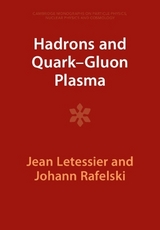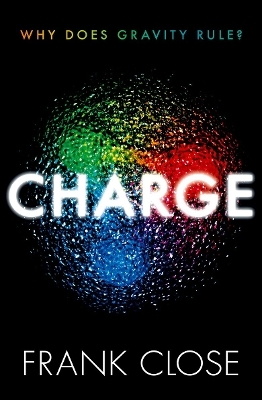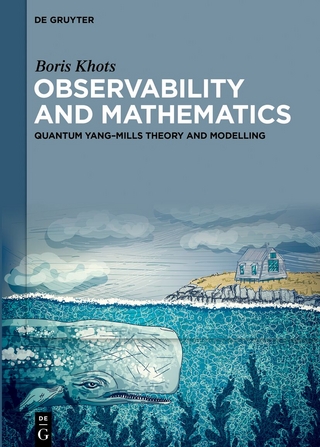
Hadrons and Quark–Gluon Plasma
Cambridge University Press (Verlag)
978-0-521-01823-4 (ISBN)
- Titel erscheint in neuer Auflage
- Artikel merken
Before matter as we know it emerged, the universe was filled with the primordial state of hadronic matter called quark–gluon plasma. This hot soup of quarks and gluons is effectively an inescapable consequence of our current knowledge about the fundamental hadronic interactions: quantum chromodynamics. This book covers the ongoing search to verify the prediction experimentally and discusses the physical properties of this novel form of matter. It begins with an overview of the subject, followed by discussion of experimental methods and results. The second half of the book covers hadronic matter in confined and deconfined form, and strangeness as a signature of the quark–gluon phase. Covering the basics as well as more advanced material, it is ideal as an introduction for graduate students, as well as providing a valuable reference for researchers already working in this and related fields.
Jean F. Letessier has been CNRS researcher at the University of Paris since 1978. Prior to that he worked at the Institut de Physique Nucleaire, Orsay where he obtained his thesis on Hyperon-Nucleon Interaction in 1970, under the direction of Prof. R. Vinh Mau, and was a teaching assistant at the University of Bordeaux. Since 1972 he has made numerous contributions to the research area of thermal particle production and applied mathematics. Johann Rafelski obtained his Ph.D. in 1973 and has been Professor of Physics at the University of Arizona since 1987. He teaches theoretical subatomic physics at both undergraduate and graduate level. Prior to this, he held a Chair at Theoretical Physics at University of Cape Town, and has been associate Professor of Theoretical Physics at University Frankfurt. He worked at the CERN laboratory in Geneva in various functions since 1977, and has been instrumental in the development of the relativistic heavy ion experimental program.
Part I. A New Phase of Matter?: 1. Micro-bang: big bang in the laboratory; 2. Hadrons; 3. Vacuum as a physical medium; 4. Statistical properties of hadronic matter; Part II. Analysis Tools and Experiments: 5. Nuclei in collision; 6. Understanding collision dynamics; 7. Entropy and its relevance in heavy ion collisions; Part III. Particle Production: 8. Particle spectra; 9. Highlights of hadron production; Part IV. Hot Hadronic Matter: 10. Relativistic gas; 11. First look at hadronic gas; 12. Hagedorn gas; Part V. QCD, Hadronic Structure and High Temperature: 13. Hadronic structure and quantum chromodynamics; 14. Perturbative QCD; 15. Lattice quantum chromodynamics; 16. Perturbative quark-gluon plasma; Part VI. Strangeness: 17. Thermal flavor production in deconfined phase; 18. Strangeness background; 19. Hadron freeze-out analysis.
| Erscheint lt. Verlag | 3.11.2005 |
|---|---|
| Reihe/Serie | Cambridge Monographs on Particle Physics, Nuclear Physics and Cosmology |
| Zusatzinfo | 15 Tables, unspecified; 200 Line drawings, unspecified |
| Verlagsort | Cambridge |
| Sprache | englisch |
| Maße | 170 x 244 mm |
| Gewicht | 660 g |
| Themenwelt | Naturwissenschaften ► Physik / Astronomie ► Hochenergiephysik / Teilchenphysik |
| ISBN-10 | 0-521-01823-4 / 0521018234 |
| ISBN-13 | 978-0-521-01823-4 / 9780521018234 |
| Zustand | Neuware |
| Haben Sie eine Frage zum Produkt? |
aus dem Bereich



